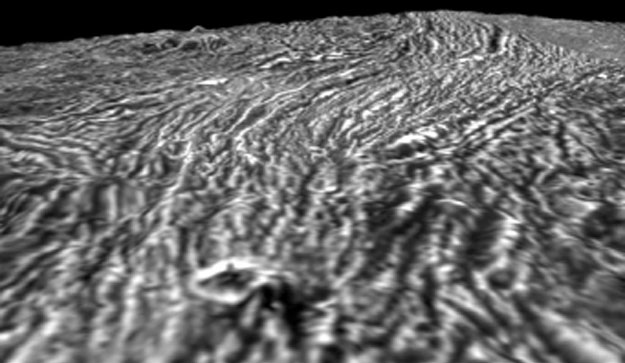Explanation: The search for extraterrestrial life came back into our own Solar System last week with the announcement that there may be liquid oceans under the surface of Jupiter's moon Ganymede. Ganymede now joins Callisto and Europa as moons of Jupiter that may harbor seas of liquid water under layers of surface ice. The ocean hypothesis surfaced as an explanation for Ganymede's unusually strong magnetic field. Ganymede, the largest moon in the Solar System, also has the largest measured magnetic field of any moon. Some exobiologists hypothesize that life may be able to emerge in such an ocean, much as it did in the oceans of ancient Earth. Above, a frame from a computer simulation shows what it would look like to fly over the surface of Ganymede, as extrapolated from photographs of the grooved moon taken by the robot spacecraft Galileo currently orbiting Jupiter.
1999 2000 2001 2002 2003 2004 2005 2006 2007 2008 2009 2010 2011 2012 2013 2014 2015 2016 2017 2018 2019 2020 2021 2022 2023 2024 2025 |
Yanvar' Fevral' Mart Aprel' Mai Iyun' Iyul' Avgust Sentyabr' Oktyabr' Noyabr' Dekabr' |
NASA Web Site Statements, Warnings, and Disclaimers
NASA Official: Jay Norris. Specific rights apply.
A service of: LHEA at NASA / GSFC
& Michigan Tech. U.
|
Publikacii s klyuchevymi slovami:
Jupiter - Callisto - Ganymede - ocean - Yupiter - okean - Ganimed - Kallisto
Publikacii so slovami: Jupiter - Callisto - Ganymede - ocean - Yupiter - okean - Ganimed - Kallisto | |
Sm. takzhe:
Vse publikacii na tu zhe temu >> | |
